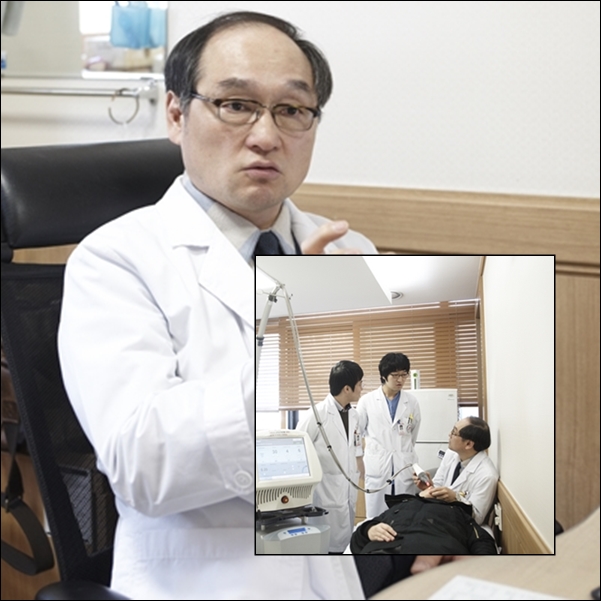▶ Previous Artlcle : [Issue] Laser Training with Clinical Experience of Wound Care and Anatomical Knowledge – Plastic Surgery III
A learning experience at the laser center in the US

Dr. Soo-young Cho of Cho Cosmetic Clinic started his laser training at Lee Taegwon Plastic Surgery Clinic. Fifteen years ago, it was not an easy decision for Dr. Cho to join Dr. Lee’s practice as plastic surgeons were expected to only focus on surgical procedures rather than laser.
[Advertisement] MAGNUM(Q-switched Nd:YAG Laser) – Manufacturer: (www.i-dana.com)]
“In 1998, Lee Taegwon Plastic Surgery Clinic boasted most laser devices available at the time including CO2, Er:YAG, Q-switched ruby, and dye laser except for hair removal lasers. I don’t think any other plastic surgeon at the time had more laser devices. At the time, Dr. Lee could not give me systematic training in laser as he was not in good health and often left the office to visit his children in the US. On the other hand, I could practice using laser devices in his absence. I also read his books on laser to brush up on the basics.”
Dr. Cho attended a training session in the US to learn innovative laser techniques.
“As part of the preparation for opening my own practice, I left for the US to receive training after working at Dr. Lee’s practice. The main purpose of my trip was to learn various surgical techniques but I also made sure to visit leading laser centers. I visited the Beckman Laser Institute in Irvine, University of Texas Laser Center, Sasaki Aesthetic & Laser Center in L.A. to learn about laser procedures. There, I got to learn about the newest devices used in the country that is leading the field of aesthetic laser, different techniques used in different races, and how the treatment system was managed. The most memorable aspect of my visit was that they collected consent forms from patients before treatment. Also, doctors made a voice recording detailing patient conditions, the type of procedure, and post-treatment care, etc. before treatment. This was the same for a procedure as simple as mole removal. I am aware that consent forms are often not collected for mole removal in Korea. When I came back to Korea, I started using CO₂, Q-switched, Er:YAG, HeNe, and hair removal lasers, etc. at my practice. In the process, I realized that Asians were more prone to PIH compared to Caucasians. I also learned that recurring conditions such as melasma should be treated with a great deal of caution. I think the most challenging conditions for plastic surgeons are pigment lesions, in particular, melasma.”
Training in laser to treat burn patients
Dr. Jae-goo Choi, Professor of Plastic Surgery, Hangana Soo Hospital, operates a burn care center. Professor Choi has introduced laser to his practice to treat burn patients.
“Before joining Hallym University Medical Center, I performed surgical scar treatment for 15 years. I joined the hospital’s burn care center five years ago and looked for new ways to treat burn wounds. I heard that laser was used in scar removal in dermatology and introduced Fraxel Xena after a six-month testing period. I tested the laser on hospital staff referencing parameters from published literature before applying in burn cases. The device itself was not difficult to operate but as I was a complete novice in laser, I was very careful. I closely observed response for the first year. As response differed depending on the scar and patient, I had to be very cautious. After a certain period of follow-up, I started using more aggressive parameters. I think our center adjusted quickly to this new method as we received a great number of patients with burn wounds. Especially, doctors at the burn center specialize in the healing process of various wounds including mild to severe burns, scratch wounds, and diabetic wounds. Therefore, they can provide good care for post-laser side effects. We became proficient in laser relatively quickly, thanks to our wound healing expertise and sufficient anatomical knowledge.”
-To be continued-
▶ Next Artlcle : [Issue] Laser Training with Clinical Experience of Wound Care and Anatomical Knowledge – Plastic Surgery V




















